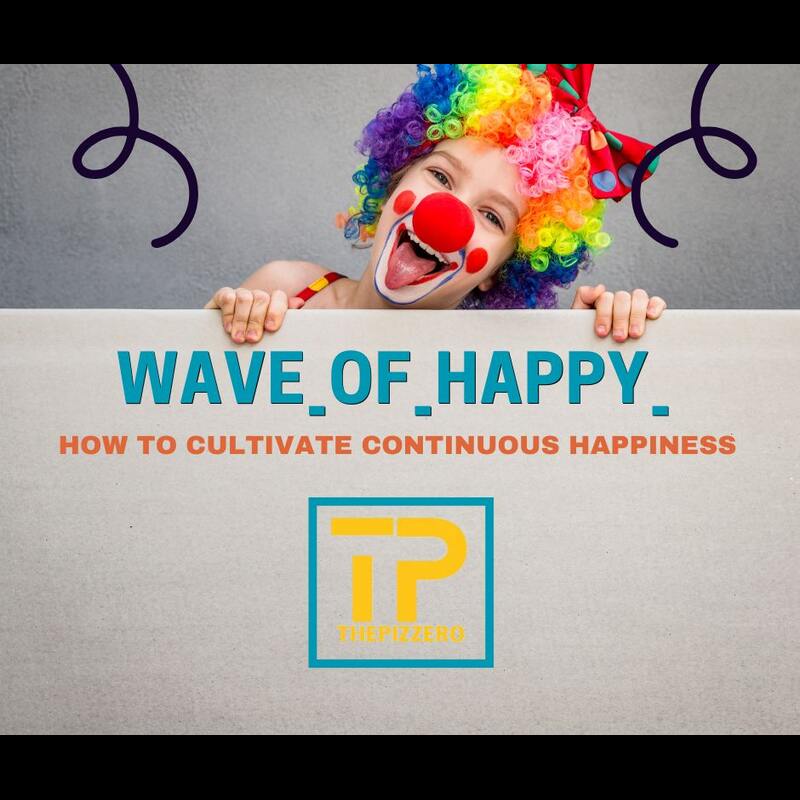Discover the Wave_of_Happy_: Your Guide to Sustainable Joy

wave_of_happy_
“The greatest happiness is continuous happiness.” – Seneca
Think of those times when pure joy simply bubbled up within you – a burst of laughter with loved ones, the thrill of achieving a goal, or a breathtaking sunset painting the sky. Those moments are precious, but all too often, they seem to slip away like sand through our fingers. Are you tired of chasing fleeting moments of happiness?
This is where the concept of the “Wave_of_Happy_” comes in. Imagine a sense of contentment that isn’t dependent on external circumstances or grand achievements but rather a wellspring of joy you cultivate from within. The Wave_of_Happy_ is about building sustainable happiness through mindful practices and a focus on the small joys life offers every day.
In a world that’s constantly demanding our attention, where stress and burnout are rampant, the Wave_of_Happy_ offers a much-needed respite. It’s about finding meaning and purpose in the seemingly ordinary. It’s about recognizing that true, lasting happiness doesn’t come from some elusive destination but from the journey itself.
Table Of Contents
Understanding the Science Behind the Wave_of_Happy_
The Wave_of_Happy_ isn’t just a feel-good concept; it has a solid foundation in neuroscience. Our brains are incredibly complex organs, and our emotions significantly influence our well-being. Let’s dive into the key players:
- The Happiness Chemicals: You’ve likely heard of dopamine and serotonin. Dopamine is our “reward” neurotransmitter, making us feel anticipation and pleasure. Serotonin plays a key role in mood regulation, sleep, and a sense of calmness. When we engage in activities that bring joy, these chemicals surge, boosting our mood.
- Neuroplasticity: The Power to Change: Neuroplasticity is the brain’s fantastic ability to change and adapt throughout life. Every time you learn a new skill, form a memory, or have an experience, your brain creates new neural connections and pathways. This means we can literally rewire our brains for happiness by intentionally focusing on positive experiences and thoughts.
The Research Speaks
Numerous studies prove this link between our thoughts, habits, and our overall well-being:
- Harvard Study: A long-term Harvard study (https://news.harvard.edu/gazette/story/2017/04/over-nearly-80-years-harvard-study-has-been-showing-how-to-live-a-healthy-and-happy-life/) found that strong social relationships were the strongest predictor of lifelong health and happiness.
- Positive Psychology Research: The field of positive psychology has made massive strides in understanding well-being. Studies show that practicing gratitude, performing acts of kindness, and engaging in mindfulness are all scientifically proven to boost happiness. (I recommend linking to a reputable positive psychology source like The Greater Good Science Center at UC Berkeley: https://ggsc.berkeley.edu/ for more info).
The Wave_of_Happy_ isn’t just about wishful thinking. By understanding the science behind positive emotions and brain adaptability, we gain tangible tools for making lasting changes in our lives.
Key Elements of Riding the Wave_of_Happy_
Think of building your Wave_of_Happy_ as a journey where each step reinforces the others. Here’s where to focus your energy:
Mindfulness and Gratitude
- Mindfulness: This means bringing your attention to the present moment without judgment. Simple practices like focusing on your breath, guided meditations (many free apps are available!), or mindful walks in nature can calm the mind and increase awareness of positive experiences.
- Gratitude: Actively focusing on what you’re grateful for shifts your perspective. Start a gratitude journal, listing three things you appreciate each day, no matter how small. This helps retrain your brain to notice positivity.
Nurturing Positive Relationships
Humans are social creatures, and strong connections are essential for well-being. Invest time in meaningful relationships with family, friends, and community. Schedule quality time, offer support, and actively listen. Prioritize those who uplift you.
Acts of Kindness
Helping others creates a ripple effect of positivity. Even small actions matter – volunteering, paying it forward with a random coffee for a stranger, or offering a genuine compliment. The act of giving activates the reward centers of our brains, boosting our own happiness.
Self-Care and Physical Health
Our bodies and minds are interconnected. When we neglect our physical health, our mood suffers.
- Prioritize Sleep: Aim for 7-8 hours of quality sleep for optimal mental and emotional well-being.
- Nourishing Nutrition: Focus on whole foods, fruits, and vegetables. Limit processed foods and excess sugar.
- Movement: Regular exercise is a natural mood booster. Find a type of movement you enjoy, even if it’s just a daily walk.
Finding Your Flow
Flow states occur when we’re fully immersed in an activity that’s challenging yet enjoyable.. We lose track of time and feel deeply fulfilled. Experiment with hobbies, passions, and creative endeavors. This sense of purpose contributes greatly to our overall happiness.
Important Note: The Wave_of_Happy_ isn’t about constant, peak happiness. It’s about creating a baseline of contentment and resilience, enabling you to better navigate life’s ups and downs.
Practical Strategies to Build Your Wave_of_Happy_
The path to lasting happiness lies in consistency, not perfection. Here’s how to get started:
- Start Small: Trying to change everything at once is overwhelming. Pick one small action from the previous section – maybe it’s a 5-minute meditation, journaling three things you’re grateful for, or sending a kind text message to a friend. Focus on that one habit until it feels natural.
- The Power of Routine: Sustainable happiness relies on consistent habits. Incorporate your chosen practices into your daily routine. Pair them with existing habits (gratitude practice while brushing your teeth, mindfulness during your commute). Make it easy and automatic.
- Reframing Negative Thoughts: Our inner voice is powerful. Notice when you’re engaging in negative self-talk (“I’m not good enough,” “This will never work”). Challenge those thoughts with evidence to the contrary and replace them with positive affirmations (“I am capable,” “I am learning and growing.”). It may feel awkward at first, but neuroplasticity is at work here—you’re strengthening positive pathways in your brain!
- The Ripple Effect: Your Wave_of_Happy_ doesn’t exist in a vacuum. The positivity you cultivate radiates outward. Your improved mood, acts of kindness, and stronger relationships create a ripple effect that inspires those around you. This, in turn, further boosts your own happiness.
Example to Illustrate
Let’s say you decide to focus on gratitude journaling. Start small by listing three things you appreciate each morning. As this becomes a habit, your outlook gradually shifts. You notice the small joys more readily. You might find yourself being more patient and kind, influencing positive interactions with your family and colleagues.
Key Takeaway: Building your Wave_of_Happy_ is an ongoing process. Some days will be easier than others. What matters is showing up for yourself and making small, consistent steps forward.
Overcoming Obstacles & Maintaining Your Wave
The journey to lasting happiness isn’t always a smooth ride. Real life throws us curveballs. Here’s how to maintain momentum when challenges arise:
Setbacks are Part of the Process
Bad days, stressful events, and negative thoughts will happen. Instead of viewing them as failures, frame them as learning opportunities. What can you take away from the experience? How can you adjust your approach for greater resilience next time?
Building Resilience
Resilience is like a muscle – we strengthen it with practice. Here are a few key strategies:
- Focus on what you can control: It’s easy to get caught up in circumstances outside your control. Shift your energy towards what you can influence– your attitude, reactions, and choices.
- Stress Management Techniques: Find what works for you – deep breathing exercises, mindfulness practices, nature walks, or activities like yoga can counteract the negative impacts of stress.
- Problem-solving Mindset: When facing challenges, approach them with curiosity rather than despair. Break down the issue, brainstorm solutions, and take action.
The Importance of Community
We are not meant to go it alone. Lean on a supportive network of friends, family, or a therapist for encouragement and a different perspective. Sometimes, just knowing someone has your back can make all the difference. Consider joining support groups or online communities focused on well-being.
Key Takeaway: Maintaining the Wave_of_Happy_ means developing the tools to weather life’s storms. It’s about adjusting your sails, not giving up on the destination. Be kind to yourself throughout the process.
Stress-Management Resources
- The American Institute of Stress: (https://www.stress.org/): Offers a wealth of information on the effects of stress, along with tools and techniques for stress management.
- Mind: (https://www.mind.org.uk/) A leading mental health charity in the UK, providing comprehensive resources and support for stress management, including downloadable relaxation guides.
- HelpGuide: (https://www.helpguide.org/): This trusted website offers practical tips, articles, and self-assessments for managing stress and boosting well-being.
Resilience-Building Resources
- The Greater Good Science Center (UC Berkeley): (https://ggsc.berkeley.edu/): A leader in positive psychology research, offering science-backed exercises and practices to build resilience.
- The American Psychological Association (APA): (https://www.apa.org/topics/resilience): Provides research, articles, and tips for building resilience in the face of life’s challenges.
- The Resilience Center: (https://www.resilienceresearch.org/): Dedicated to the study of resilience, this website offers educational materials and strategies for fostering resilience in individuals and communities.
Conclusion
The Wave_of_Happy_ is about embracing the power within you to create a life filled with greater contentment and joy. It’s a journey of intentionality, focusing on small steps that build momentum over time. By prioritizing mindfulness, gratitude, strong relationships, self-care, finding your flow, and developing resilience, you cultivate a wellspring of happiness that carries you through the ups and downs of life.
Remember, lasting happiness doesn’t mean being in a constant state of euphoria. It’s a sense of well-being, knowing that even when challenges come your way, you have the tools to ride the waves and find your way back to a place of peace.
Start your journey toward your Wave_of_Happy_ today. Choose one small practice from this guide and commit to implementing it into your life. Notice the shifts it creates, both within yourself and the way you experience the world. This is the path to a richer, more fulfilling life.
Call to Action: Share something that brings you a spark of joy in the comments below! Let’s inspire each other and spread the Wave_of_Happy_ together.







